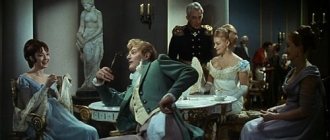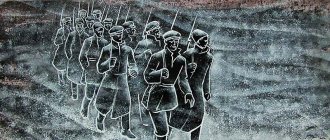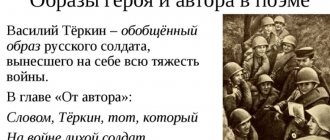Crossing characters with real people
Sergei Yesenin took all his characters from his own life experience. The prototype of Anna was Lydia Ivanovna Kashina. Other characters do not bear complete resemblance to real people. But these are all the characters of the poet’s fellow villagers. Although there is a lot in common between Pron Ogloblin and Pyotr Yakovlevich Mochalin. The two at one time were engaged in propaganda of Lenin’s ideas.
This is a wonderful poem, and its author is Yesenin. “Anna Snegina” is a summary of his own period of life.
Poem test
Check your memorization of the summary content with the test:
- /10
Question 1 of 10In what year was S. A. Yesenin’s work “Anna Snegina” written?
Start test
Hall of Fame
To get here, take the test.
- Ashat Evloeva
8/10
- Asif Iskenderov
10/10
- Nikolay Kryukov
9/10
- Aaaaaaaaalex Aleeeeeeeeex
8/10
The personality of the author in the work
Melnik often calls the main character Sergusha, and yet there is no one hundred percent coincidence between the author and his character. According to Anna's description, the narrator's portrait is similar to the poet's appearance. But this cannot be said for sure. Nevertheless, an analysis of Yesenin’s poem (“Anna Snegina”) can be done based on the fact that the book is autobiographical.
Also, in one of the conversations, the main character says that his character is connected with the fact that he was born in the fall (Sergei Alexandrovich was born on October 3). According to the poem, he comes to the village of Radovo; in reality, in 1917-1918, Yesenin visited the village of Konstantinovo. Like his character, he is very tired of war events. I wanted to relax and calm my nerves, which is easiest to do away from the capital.
Even a brief summary of “Anna Snegina” shows how much the author put his own experiences into the poem.
About the product
The poem “Anna Snegina” by Yesenin reflects the difficult fate of people whose youth fell during the revolution in Russia and the events of 1917-1923. Against the backdrop of socio-political chaos, the love story of the main characters unfolds. The work, written by Yesenin in 1925, is largely autobiographical and fully reveals the problems of society of that time through the prism of the author’s worldview.
When preparing for a literature lesson, we suggest reading online a summary of “Anna Snegina” chapter by chapter. It will also be useful when filling out a reader's diary. However, it is preferable to read poetic works in full, rather than in retelling.
The material was prepared jointly with a teacher of the highest category, Ilyina Galina Sergeevna.
Experience as a teacher of Russian language and literature - 36 years.
The image of Anna Snegina
The image of the first love, Anna Snegina, is partially copied from a real woman named Lidia Ivanovna Kashina (lived 1886-1937). Before the revolution, she lived in the village of Konstantinovo (in the poem Radovo), where the poet is from and where the book hero came to hide from war tragedies. In 1917, her house became the property of the peasants, and Lydia Ivanovna moved to another estate. Yesenin often visited both his parents’ and other houses. But, most likely, there was no story at the gate with a girl in a white cape and a gentle “no”. Kashina had two children who loved Sergei very much. Her relationship with her own husband was not very close.
In 1918, Lydia moved to Moscow and worked in the capital as a stenographer. They also saw each other often in the city. Unlike Anna, Lydia did not move to London. The real Kashina is very different from the character invented by the poet, such as Anna Snegina. The analysis showed that there are many inconsistencies in the characteristics of these two figures. Nevertheless, the image of the main character came out mysterious and exciting.
History of character creation
The poetic work, published in 1925, became a kind of summing up of the joint journey of the poet and his beloved country. It intersects two themes: lyrical and epic. The first is expressed in the description of the protagonist’s sublime feelings for the girl.
The second is a description of the author's thoughts regarding the fate of his country. The poem describes Yesenin's views, formed during certain historical events. The poet recreated in his work the image of the time being described and filled it with living content.
Yesenin’s biography is reflected in “Anna Snegina”. He describes a young man who came from a peasant background and became interested in poetry. Like his creator, the hero became famous in the pre-revolutionary years. From the mouth of the miller, readers hear the name Sergush more than once. It is impossible to say reliably that the poet described himself in poetry, but the compared facts give reason for reflection on this matter. Anna describes the poet, and the description she gives confirms her guesses.
The main character mentions that he was born in the fall, and Yesenin’s birthday falls on October 3. Like the author, the character does not like war and is tired of it. Yesenin’s own memories and experiences inspired him to create the poem. When creating the heroes of the work, the poet was guided by the personalities around him. The selected characters - Labutya, the miller's wife and her husband - are images of the author's fellow villagers. Pron Oglobin is similar to the one who propagated Leninism.
Lidia Ivanovna Kashina became the prototype of Anna Snegina. She lived in the village of Konstantinovo, which in the work acquired the name Radovo. This is Yesenin’s small homeland and his refuge after the horrors of the war. After the revolution, the landowner's house became the property of the peasants, and Kashina moved to another estate.
It is unlikely that the story of love and refusal took place, but the author was allowed into Lydia Ivanovna’s house. Her two children loved the poet very much. The woman was not having a good relationship with her husband. In 1918, she moved to Moscow and began working as a stenographer. An analysis of the lives and images of Kashina and Snegina shows that these persons have many differences, but there are nuances that make them similar.
Arrival in Radovo
From the first lines of the poem, the author introduces us to the atmosphere of the village of Radovo. According to him, the village would appeal to anyone looking for peace and comfort. Near the forests there is a lot of water, fields and pastures, and there are lands lined with poplars. In general, the peasants lived well, but the authorities increased taxes over time.
In the neighboring village, Kriushi, things were worse, so the residents cut down the forest near Radovo. The two sides met, with bloody consequences. Since then, problems began in the village.
The narrator hears such news on the way.
We learn that Yesenin, from whom the story comes, decides to forget all the hardships of the war when he arrives in the village. The summary of “Anna Snegina” is also the experiences of the narrator. He shares his thoughts about the absurdity of war and the unwillingness to fight for the merchants and nobles who remain in the rear. Yesenin chooses a different fate for himself and is ready for a different kind of courage. From now on he calls himself the first deserter.
After the author has paid the cab driver beyond the norm, he goes to the mill. There he is warmly greeted by the owner and his wife. From their conversation we learn that Sergei came for a year. Then he remembers the girl in a white cape who kindly told him “no” at the gate. This is how the first chapter of the poem ends.
Introducing the reader to Anna
The miller calls the hero Sergusha when he wakes him up for breakfast, and he himself says that he is going to the landowner Snegina. On the way, Yesenin admires the beauty of the April garden and, against his will, remembers the cripples of the war.
During breakfast, the author talks with the “old woman,” the wife of the miller, who is one of the characters in the poem “Anna Snegina.” The summary of her monologue is complaints about the troubles that came to them after the overthrow of tsarism. The woman also remembers a man named Pron Ogloblin. It was he who was the killer during the fight in the forest.
During the conversation, the narrator decides to visit Kriushi.
On the way he meets a miller. He says that when he shared his joy about the guest’s arrival, young, married Anna, the daughter of the owners, was delighted. She said that when the poet was young, he was in love with her. During this, the miller smiled slyly, but Yesenin is not offended by crafty words. Sergei thinks that it would be nice to have a little romance with a beautiful soldier.
The village of Kriushi greeted him with rotten houses. A dispute broke out nearby about new laws. Sergei greeted old friends and began to answer questions from the peasants that poured in from all sides. When asked: “Who is Lenin?” - answers: “He is you.”
Other characters
Melnik is a warm and hospitable middle-aged man with whom Sergusha stays.
The miller's wife is a simple, sensible woman, an excellent housewife.
Pron Ogloblin is one of the village residents, a passionate agitator and a good organizer. But at the same time he is a desperate drunkard, a fighter, a troublemaker.
Labutya is Pron's brother. A two-faced, cowardly and blasphemous peasant.
Anna's mother is a determined, cold-blooded woman with self-esteem.
Feelings of Anna and Sergei
The third chapter of the poem begins with the author feeling unwell. He was delirious for several days and understood little of what kind of guest the miller had gone for for him. When the hero woke up, he realized that the figure in a white dress was his old acquaintance. Further in the poem they remember the past days, there we learn their brief content. Anna Snegina had not been in his life since his youth. It was with her that he sat under the gate. The woman talks about how together they dreamed of glory, Yesenin achieved his goal, and Anna forgot about her dreams because of the young officer who became her husband.
The poet does not like thoughts about the past, but he does not dare to express his point of view on the chosen topic. Slowly, Anna begins to reproach him for drinking, which the whole country knows about, and asks what the reason is. Yesenin only makes jokes. Snegina asks if he loves someone, Sergei replies: “No.” They parted at dawn, when the feelings that raged there at the age of sixteen were renewed in the poet’s heart.
After some time, he receives a note from Ogloblin. He calls Yesenin to go with him to Anna and ask for land. He reluctantly agrees.
Some kind of grief happened in Anna’s house, what exactly is unknown to the poet. From the threshold Ogloblin asks for land. The demand for an allotment remains unanswered. Anna's mother thinks that the man has come to see her daughter and invites him. Yesenin enters the room. Anna Snegina mourns her husband, who died in the war, and reproaches the guest for cowardice. After such words, the poet decides to leave the woman alone with her grief and go to a tavern.
A brief history of the creation of the poem “Anna Snegina” by S.A. Yesenina
“Anna Snegina” is an autobiographical poem by Sergei Yesenin. The author highly appreciated this work, considered it his best creation, because he put all his skill, all his accumulated personal and creative experience into it. Intimate experiences in the poem are closely intertwined with global changes in the country.
Plot
The plot is based on memories of trips to his native village, taking place against the backdrop of epic events. The work consists of 5 chapters.
- Russia is drowning in the First World War, which is squeezing all the strength out of peasants and soldiers. Sergusha is going home.
- Sergusha, the miller and his wife talk about the situation in Russia, about Lenin. The lyrical hero meets Anna Snegina, his first love.
- Against the backdrop of their mutual interest, a riot occurs in the village. The peasants take away Snegina's lands for public ownership. She reproaches the poet for cowardice and breaks off relations with him.
- Anna takes back the offensive words, explaining them as despair. Land in the village is being nationalized. Anna emigrates, Sergusha returns to St. Petersburg.
- The poet is shocked by what the capital of new Russia has become after the civil war. Devastation and poverty reign everywhere, bandits are at every step. He goes to Radovo again, where a letter from Anna awaits him. Sergei remembers her with tenderness, but is unable to leave his homeland.
A brief history of the creation of the poem “Anna Snegina” by S.A. Yesenina
The work was created during Yesenin’s trip to the Caucasus in 1924-1925. Before arriving in the Caucasus, the poet went on a creative trip to America and Europe, but found neither inspiration nor peace there. The external well-being of the West did not fill his soul; he was in crisis, tormented by creative hunger. In letters to friends, he emphasized that he had written almost nothing for 2 years. But my stay in the Caucasus became a very fruitful period. Sergei Alexandrovich wrote a cycle of poems “Persian Motifs” and many others that were significant for his work, created the poems “Flowers” and “Anna Snegina”.
The idea for “Anna Snegina” arose from Sergei Yesenin after trips home to the village of Konstantinovo, which he called Radovo in the poem. In December 1924, while in Batumi, he began work, things went easily. The poet was in high spirits and felt enlightened. He wrote that he no longer wanted stupid fame, he understood what poetry was, that he could write easily and well as never before. He sincerely considered “Snegina” the pinnacle of his creativity. The poem was quite voluminous, but already at the end of January S.A. Yesenin wrote to Alexander Voronsky, the editor of the magazine in which he usually published, that he had finished writing.
However, all this time the author was in relative solitude. There was no colorful city life around, no riot of taverns and drinking parties. Journalist Lev Novitsky, in whose house Sergei Alexandrovich lived, even locked the poet in his room for half a day so that he would not be distracted from work. And if at first Yesenin admired the Georgian peace, then already in January he complains that everything is bad, boring, worse than in the village. The same period, from November 1924 to January 1925, dates back to a number of poems that turned out to be the most pessimistic and hopeless in his poetry. Yesenin was overcome by despondency and despair. He passionately loved his homeland, but it was difficult for him to accept the turmoil reigning around him. This was compounded by personal experiences and a feeling of loneliness. “Anna Snegina” in a sense became a salvation for the poet. Memories of unrequited youthful love temporarily kept him from despair, because “We all loved during these years, But that means they loved us too.” And no matter how changeable the events around you are, the feeling of happiness is timeless.
At the beginning of March, Yesenin returned to Moscow, where he rewrote the poem completely and gave it to Voronsky. In May, the poem was published in the newspaper “Baku Worker” and the magazine “Krasnaya Nov”, but the poet did not have the opportunity to see his creation published in a separate form, as he expected. Critics and writers greeted him coolly and with caution. The poem was different from Yesenin’s other works; its assessment of political events and bright, bold images forced us to refrain from commenting. Only at the end of the 1960s. “Anna Snegina” was widely reflected in culture.
Separation of the main characters
In the fourth chapter, Yesenin tries to forget about Anna. But everything changes, and Ogloblin comes to power together with his lazy brother. They waste no time in describing the Snegins’ house, along with their property and livestock. The miller takes the mistresses of the house to live with him. The woman apologizes for her words. Ex-lovers talk a lot. Anna remembers the sunrise they saw when they were young. The next evening, the women headed in an unknown direction. Sergei also leaves to dispel sadness and sleep.
Letter of Hope
Next, the poem “Anna Snegina” tells about the six post-revolutionary years. A summary of subsequent events is as follows: the miller sends Yesenin a letter, where he reports that Ogloblin was shot by the Cossacks. His brother, meanwhile, was hiding in the straw. He sincerely asks Sergei to visit him. The poet agrees and sets off. He is greeted joyfully, as before.
An old friend gives him a letter with a London seal from Anna. She writes simply and ironically, but through the text the poet captures her feeling of love. Yesenin goes to bed and again looks, as he did so many years ago, at the gate where once a girl in a white cape said affectionately “no.” But this time Sergei Alexandrovich concludes that in those years we loved, but, it turns out, they loved us too.
Option 2
Sergei Yesenin is the author of the autobiographical poem “Anna Snegina”. In it he describes youthful, sincere and pure love.
Yesenin begins his work with a description of the main character - the young poet Sergushi. Readers will recognize the author himself in this image. There is another main character here - Anna. She is the poet's first love. In their youth, Anna and Sergei met, loved to take long walks together and were in love with each other. The poet's beloved was very cheerful, good-natured, and active.
Upon the poet’s return to his native village after the revolution, he was destined to meet Anna again. But the action in the work unfolds in such a way that Anna marries a White Guard and her future life changes radically. The heroine becomes an important person. Thanks to her position, the girl begins to behave completely differently, trying to fully correspond to her husband. It is clear from her clothing, gestures and behavior that her husband occupies a high position.
When meeting with her former lover, Anna behaves ambiguously, restrained and sophisticated, but at the same time shows a little coquetry. And even despite this behavior, the girl continues to remain a faithful wife. The heroine is sad that her husband has gone to war. At the same time, Anna looks spontaneous and noble. Sergushi shows a feeling of nostalgia. He is attached to memories of past days in Russia, of her former majesty, and the feeling of falling in love with Anna comes to him again. But the social views of the poet and his former lover are different. At a certain point, the revolution confronts a man with a choice, and he chose the peasants rather than the Snegin family.
The author presents Anna to readers on the one hand - in her romantic past, and on the other hand - in the revolutionary and harsh present. This important society lady, an elegant and beautiful woman remains kind and humane to the end. Even after being widowed and forced to leave her native place, Anna did not become embittered or callous.
The author shows the image of Anna in the poem as dramatic. But from the beginning to the end of the work, the heroine emanates affection, warmth of soul and kindness.
Other essays: ← French lessons - The meaning of the story ↑ Other Characteristics and image of Fevronia of Murom →
Themes of the work
The summary of “Anna Snegina,” which was outlined above, shows how clearly the author reflected the problems of the society of that time and his youthful experiences. At that time he was worried about the fate of Russia and its inhabitants.
The events in the work begin in 1917. The last, fifth chapter is dated 1923. A striking emphasis in the poem is the war between two villages, which is interpreted as civil. A parallel can be drawn between the Snegin estate and the government; this symbolizes the failure of tsarism.
And although in a letter to a friend Sergei Yesenin wrote that he was now experiencing a creative crisis, and his muse had left him, the work “Anna Snegina” can easily be considered one of the “pearls” of Russian literature.





